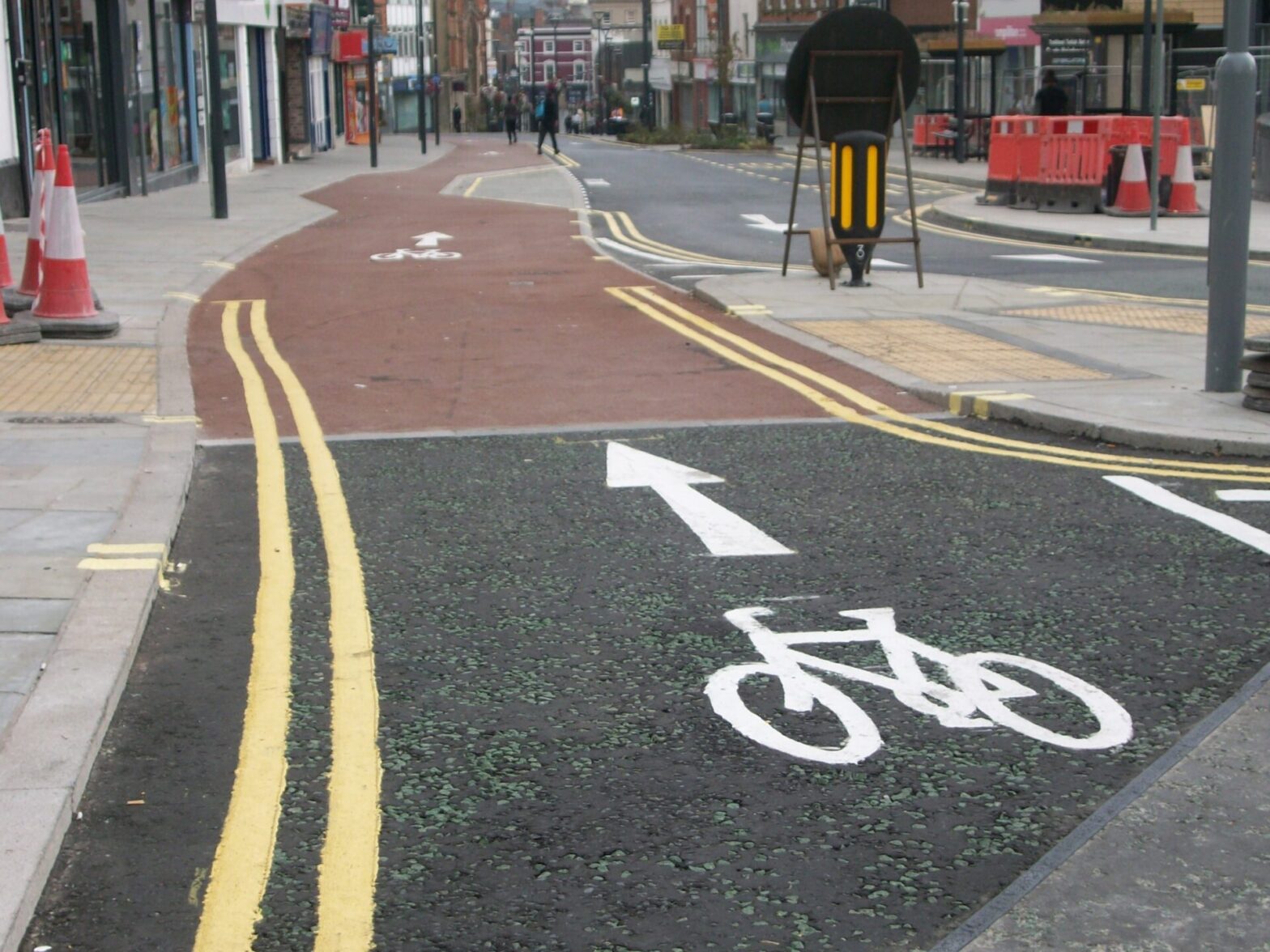We first reported on this scheme back in February 2023 when work started on site on the construction of a Transforming Cities funded scheme at The Spot. Now that the works are largely complete we’ve been back to see the results.
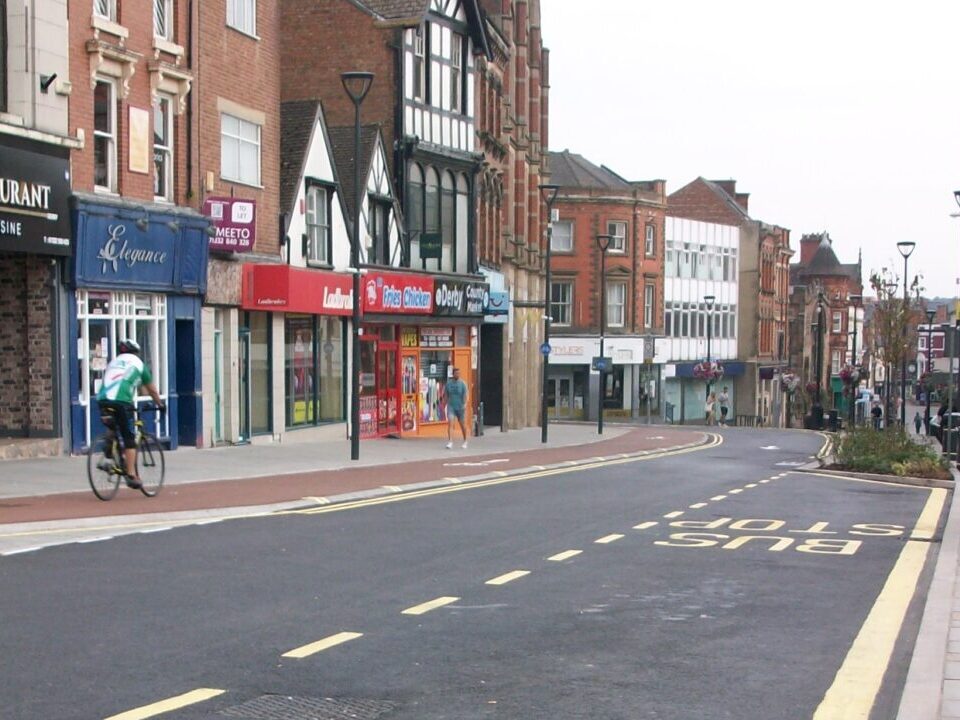
Rider’s Eye View
We’re giving you your pudding before you’ve had your mains in the form of a short video riding from one end of the scheme to the other and back again.
The Highlights & Lowlights
Starting on St Peter’s Street, the cycleway itself is generally 3m in width which, as many on our forum have pointed out, would be sufficient for a two-way cycleway. It’s a lovely rich rusty-red colour, so there’s no excuse for leaving your lane.
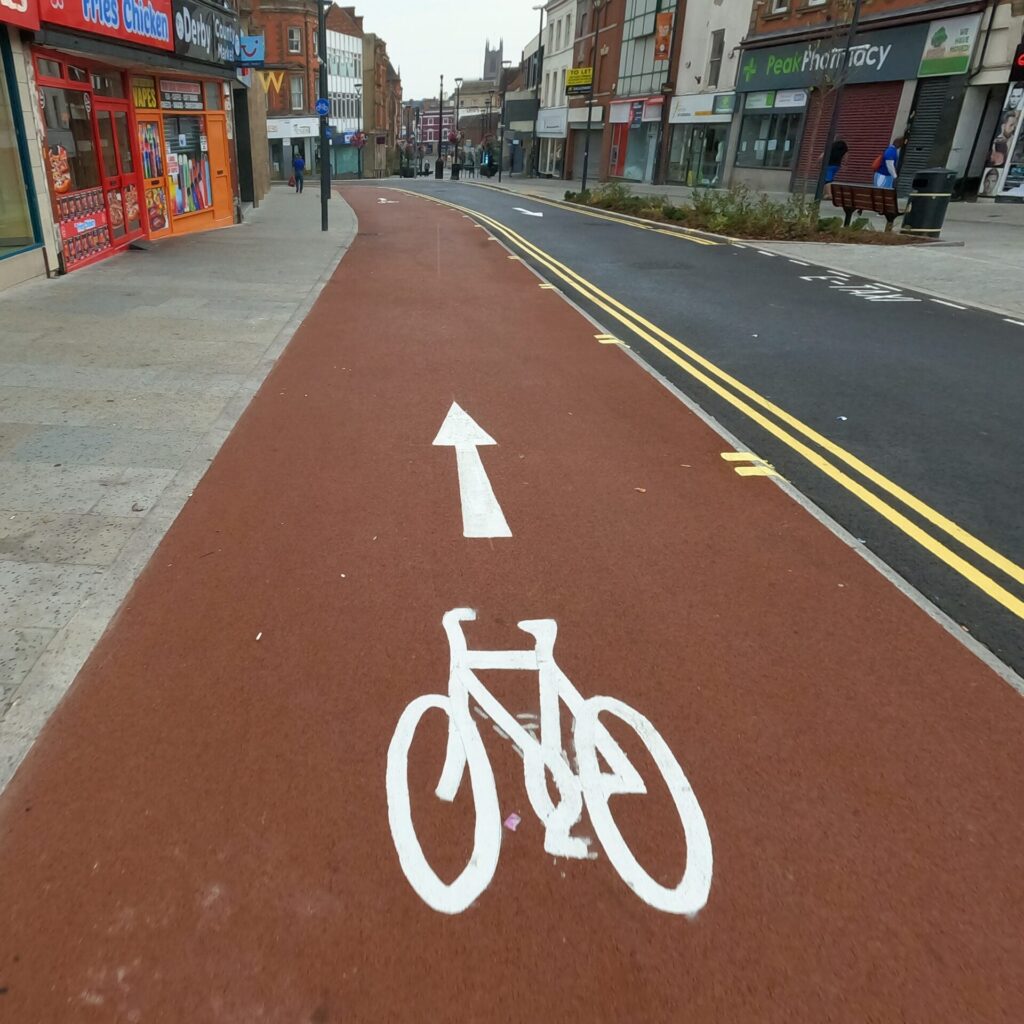

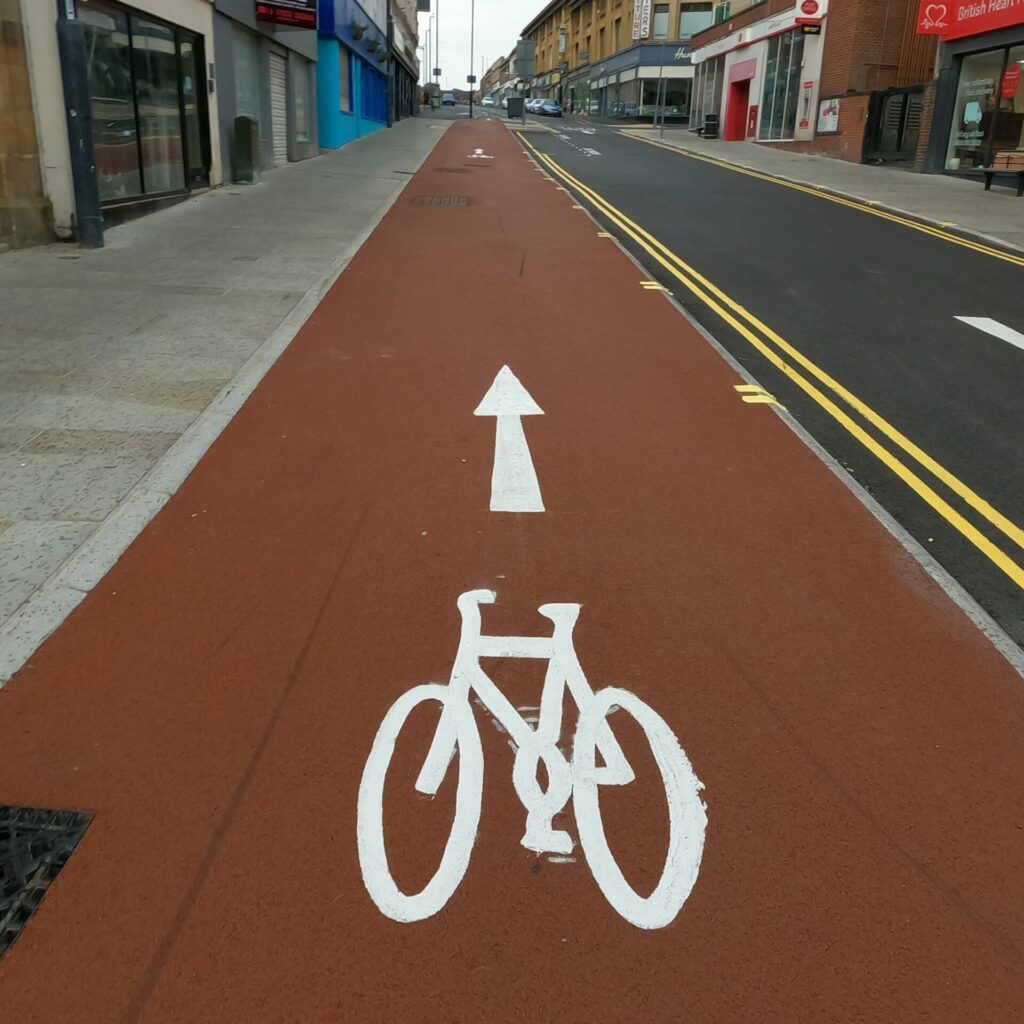
Sunshine on Leith
With the inclusion of a loading bay, Derby now has its very own tribute to Leith Walk, the much-derided cycleway in Edinburgh made famous for its sharp angular alignment.
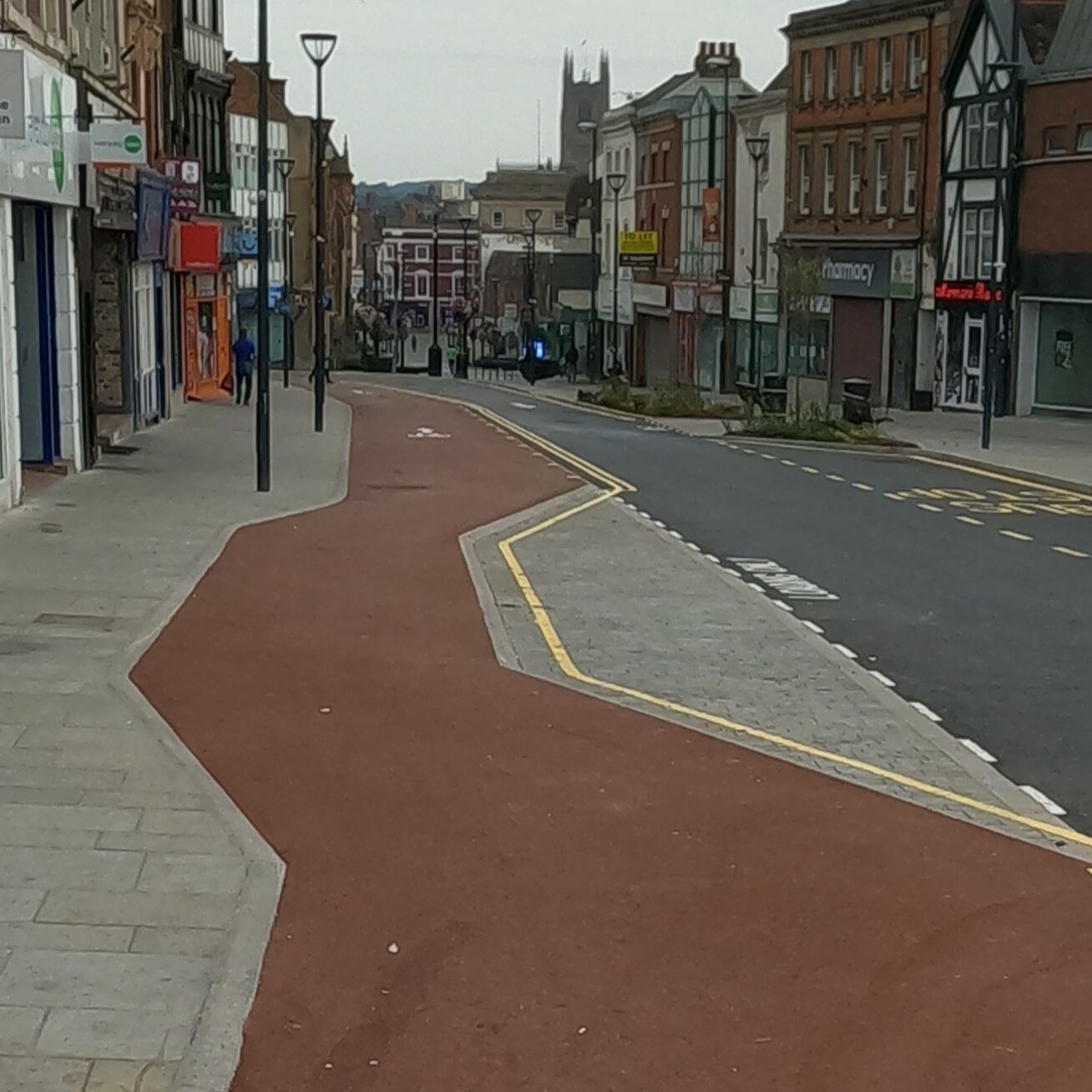
Understanding how people use infrastructure at the design stage is key to ensuring the proposal will function correctly once built. With miles of motorways and railway lines across the land providing inspiration on how to design a smooth-flowing alignment, it’s difficult to understand why cycleways aren’t always designed with the same principles.
The width of the cycleway reduces to 2m around the loading bay and the effective width is reduced further still.
This rider is aptly demonstrating the poor alignment around the loading bay by taking to the road.

Babington Lane Bus Gate
The road from Babington Lane, at the junction with Gower Street, is now a bus gate but it is not clear if it will have the same level of enforcement as the bus gate outside the council house on Corporation Street. The wording on the new signage is the same as before but there doesn’t appear to be any exemption for blue-badge holders.

A proper two-way cycleway could be built in the future all the way up to the top of Babington Lane to join the cycleways on the inner ring road.
The on-road section (required if you’re heading into town) is much improved, mainly down to new surfacing, but there’s now a clearer run into town without the need to weave around buses. A 20mph limited wouldn’t have hurt, but the limited traffic and the sharp bend around Waterstones means any vehicles are unlikely to reach such dizzying speeds.
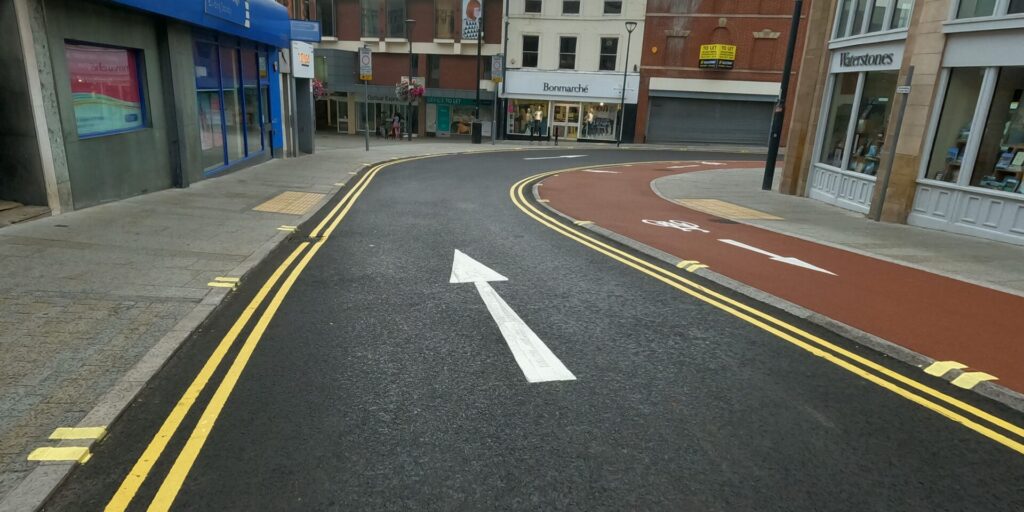
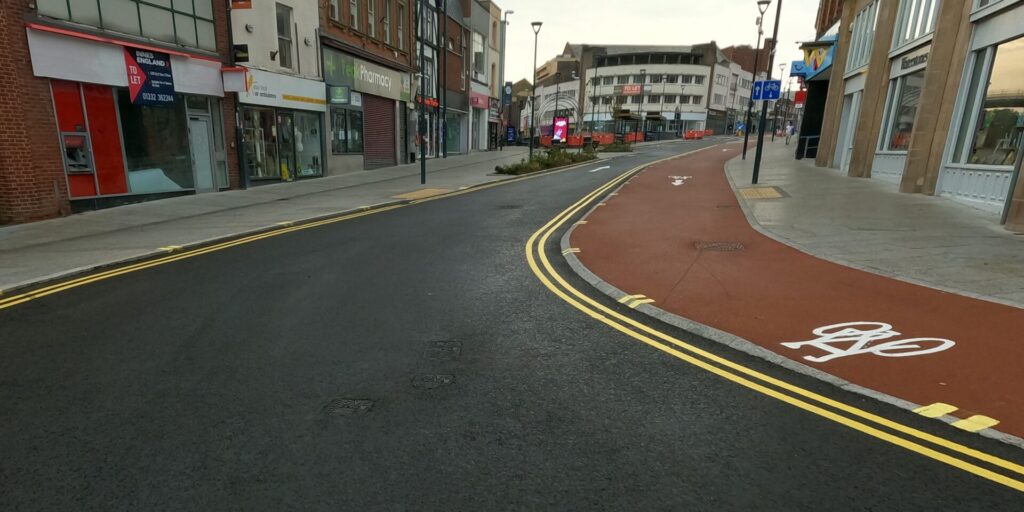
Taxi for one!
As part of the scheme, a single bay has been carved out for an electric taxi. The value of this provision is somewhat limited and undoubtedly it will be used by petrol/diesel cabs as well as delivery vehicles.
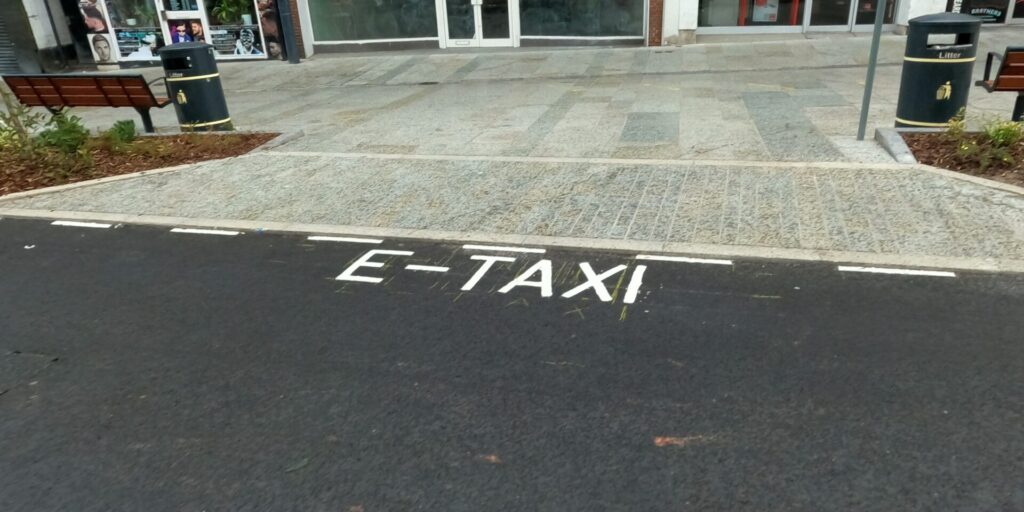
Greenway
It’s not easy going green and this is definitely true for asphalt. Do not adjust your sets this “black top” really is green. The plans do show it as being coloured, but the results are a little lacklustre.
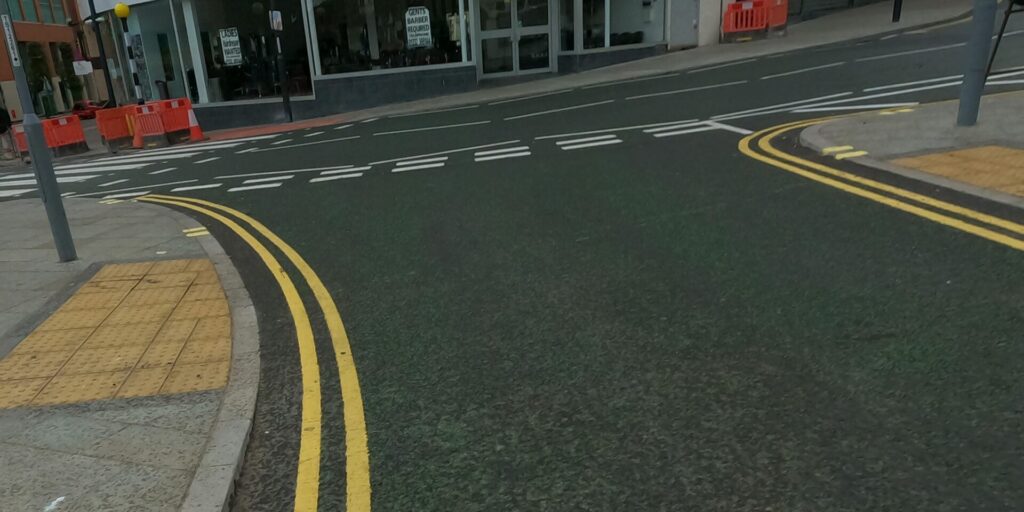
Bus Stops
The relocation of the bus stops from Babington Lane is an obvious benefit providing more space for passengers using the buses and for pedestrians using Babington Lane. A double win.


Real Greenery
A smidgen of soft landscaping has been incorporated into the scheme. One disappointment between the original consultation and the revised plans was the omission of, what would have been, a line of trees on the Waterstones side of St Peters Street between the footway and cycleway.
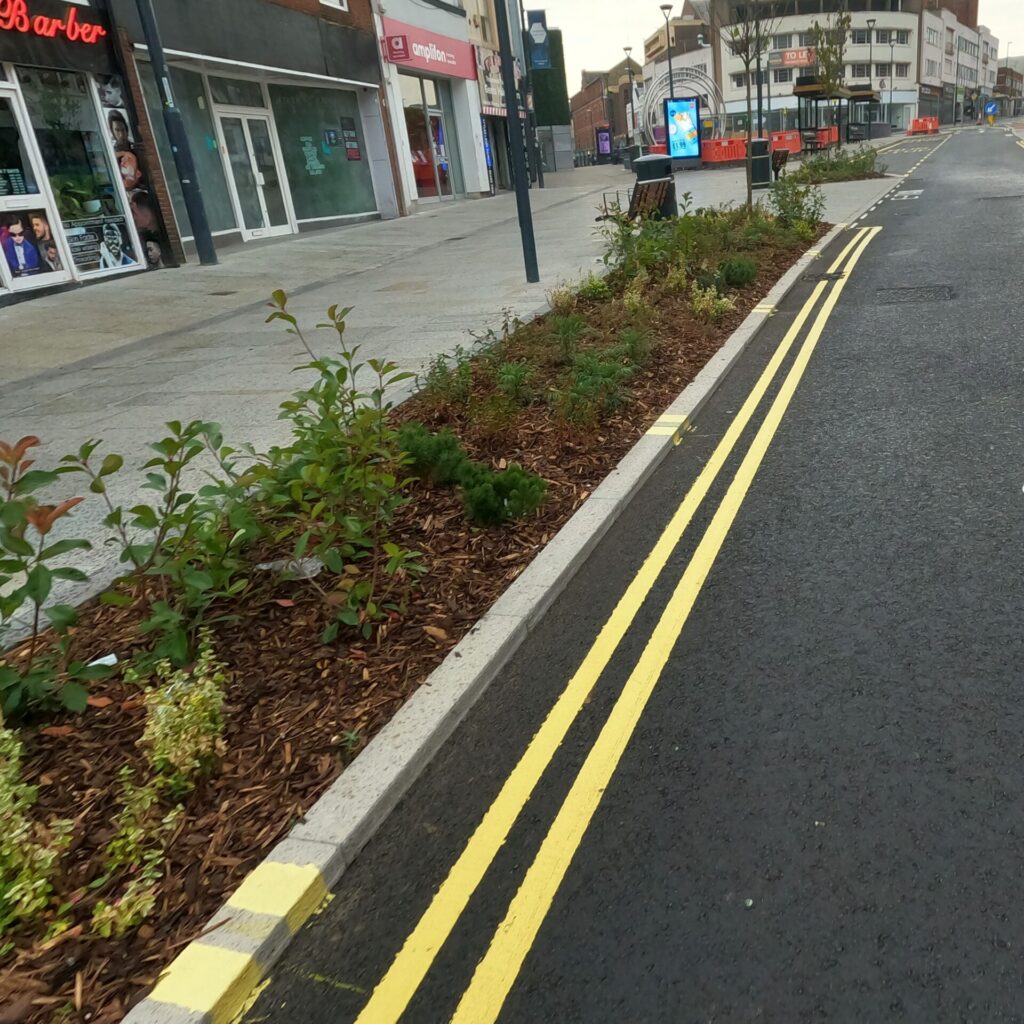

Summary
The scheme as a whole is a little underwhelming but it’s a marked improvement from the previous cycling experience of riding against the flow of traffic, on a terrible surface whilst sandwiched between park cars and the open road.
Due to its short length, it’s strategic purpose is unclear but it is adaptable and extendable should future adjacent schemes be proposed to tie-into this one – A two-way cycleway up Babington Lane would be a real win.
There’s merit in moving the bus stops which has de-cluttered the footway outside the Post Office and the British Heart Foundation shop at the bottom of Babington Lane.
We hope the cycleway doesn’t become a parking strip for taxis and other vehicles – Time will tell.

